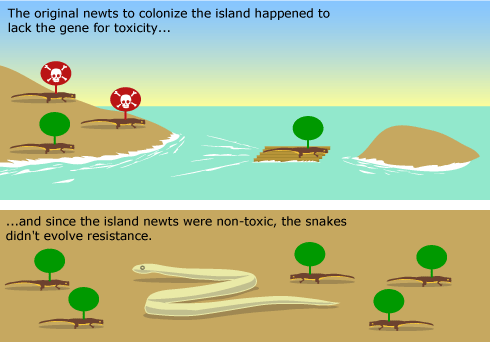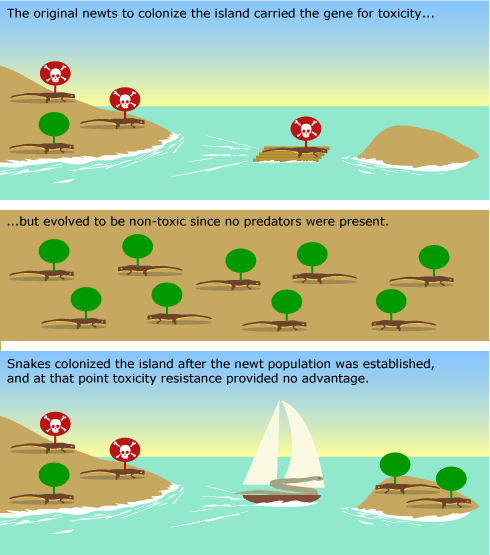Non-toxic newts and non-resistant garter snakes live together on Vancouver Island, but haven’t engaged in an arms race. Why? There are a couple of possibilities:
Explanation #1: If only a few newts arrived to colonize the island, they might not have had the gene for toxicity simply by chance. This is an example of the founder effect. Because the original island newts had no gene for toxicity, they produced non-toxic descendants. And without any toxic newts around, resistant snakes had no advantage, and so this trait did not become common in the snakes.
Explanation #2: Another possible explanation for the non-existent arms race on Vancouver Island is that toxic newts colonized the island, but arrived to discover an absence of predators. Remember that TTX is energetically expensive for newts to produce, so when there are no predators around, making TTX is a disadvantage. Natural selection would have favored newts without TTX, and the island newts would have evolved to be TTX-free. If snakes arrived on the island later, they would have found newts that were no longer toxic and in that situation, resistant snakes would not have had any advantage. The island would end up with innocuous newts and TTX-susceptible snakes.


